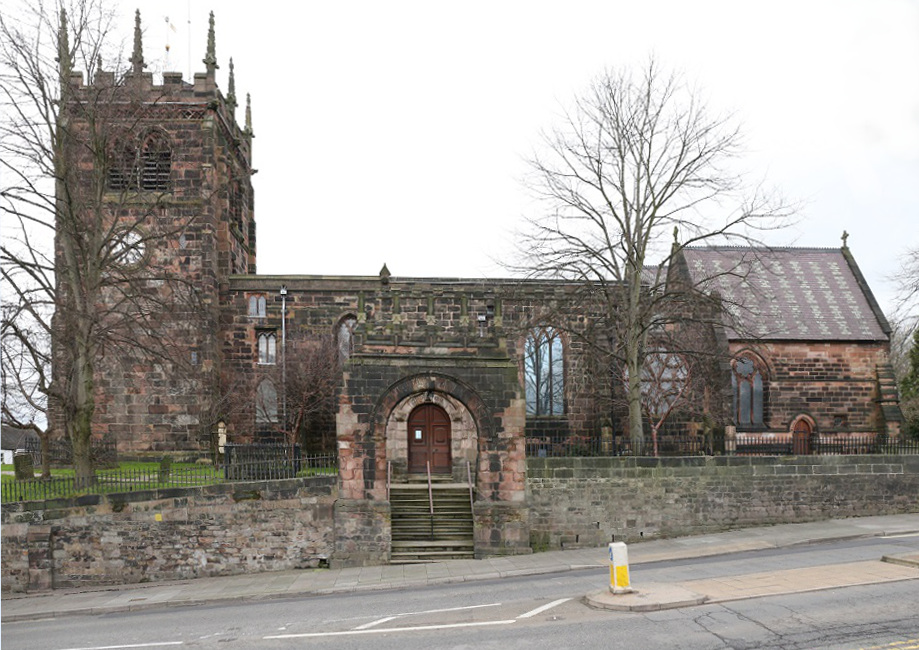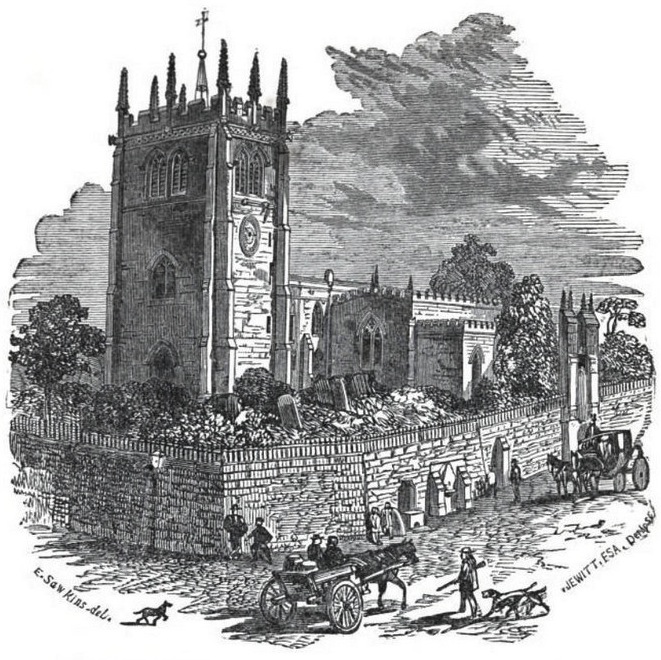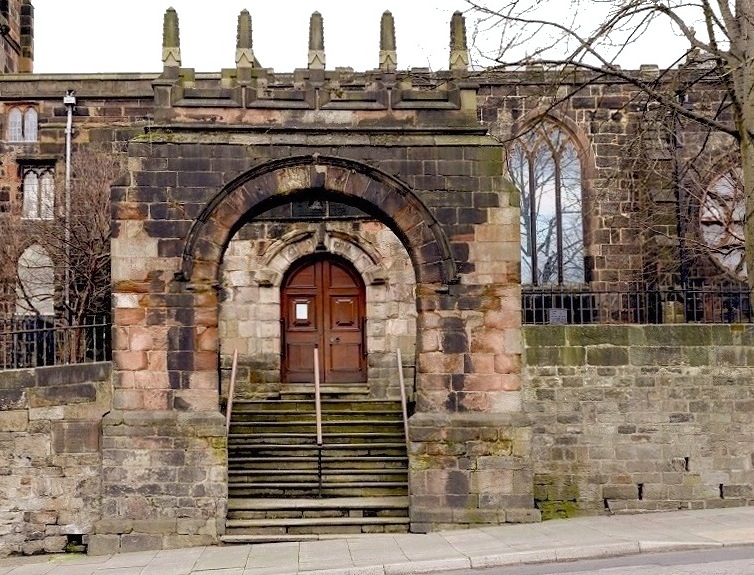Photographs taken and kindly sent in by Michael Critchlow, and scanned image by the author. [You may use these images without prior permission for any scholarly or educational purpose as long as you (1) credit the photographer or source and (2) link your document to this URL in a web document or cite the Victorian Web in a print one.]

The east end of the church, with George Edmund Street's rebuilt chancel to the right, and a chapel or organ chamber to the left.
The parish church of St Edward the Confessor, Church Street, Leek, Staffordshire, which is Grade II* listed, is constructed of "roughly coursed and squared rubble with leaded and banded slate roofs" (listing text). The earliest parts of the structure go as far back as the late thirteenth century, when the original church was rebuilt after a fire, but much of it dates from a few centuries later. Some Victorian interest lies in the work here of Ewan Christian, when he was diocesan architect and in charge of restoring the nave roof (in c.1856 or c.1862, depending on source — the listing text has the earlier date, and Kelly's Directory [p. 213] the later one). But there was a much more radical restoration by George Edmund Street a little later on: Street rebuilt the chancel in 1865-67. The church reopened on 16 July 1867 (Kelly's Directory, 231). Also important are Street's furnishings and the fine Victorian stained glass installed during or after this period.


Left: Looking down the north side, towards the west end. Right: Looking down the south side towards the west tower.
Street's larger chancel has an impressive five-light window. On the north side, the lean-to vestry can be seen, followed by the wide north aisle with another impressive window at the east. In this context, note Nikolaus Pevsner's reference to the church's "former transepts" (168). On this side too is a north porch, added in 1838 — not by Ewan Christian, who came on the scene later. One of the unusual features is that the aisles stop before the western end, having been shortened in the sixteenth century (see Pevsner 168 again). The church seems to have undergone more adaptation than usual over the years, making it rather quirky both inside and out.
On the south side is the chapel or organ chamber adjoining the extended chancel, but set back a little, with a higher three-light window. The three structures together at this east end (two gabled, one lean-to) make up a picturesque ensemble, and form the main Victorian contribution to the exterior.

The imposing length of the south side, which faces and looks down on the road.


Left: An illustration of the church from the west end, in about 1862 — the foreshortened south aisle is very noticeable from this angle. (b) Closer view of the south porch entrance, with part of the south rose window to the right.
The tower, with its buttresses, embattled parapet and array of crocketed pinnacles, is an important and characterful feature. Of course, it is pre-Victorian, but according to the listing text the two-light window was recut in the nineteenth century. This south wall has a seventeenth-century porch (see Pevsner 169), which affords the main access to the church. Another special feature is the rose window towards the east, which again suggests a lost transept. Like the three-light window of the south aisle chapel, as well as the rose window in the north chapel and the large east window there, it was filled with lovely stained glass by Morris and Co.
Related Material
- St Edward the Confessor, Leek: Interior and Fittings
- South rose window designed by G. F. Bodley for Morris & Co.
- North rose window designed by G. F. Bodley for Morris & Co.
- North aisle east window with designs by Edward Burne-Jones
- South aisle window designed by John Henry Dearle
- Embroidery here by the Leek School of Embroidery
References
Kelly's Directory of Staffordshire. 1896. University of Leicester Special Collections Online. Web. 25 January 2016.
Pevsner, Nikolaus. The Buildings of England: Staffordshire. New Haven and London: Yale University Press, 2002.
"St Edward the Confessor, Leek". British Listed Buildings. Web. 25 January 2016.
Sleigh, John. A History of the Ancient Parish of Leek in Staffordshire. Leek: Robert Nell, London: John Russell & Son, 1862. Google Books. Free ebook. Web. 25 January 2016.
Last modified 27 January 2016